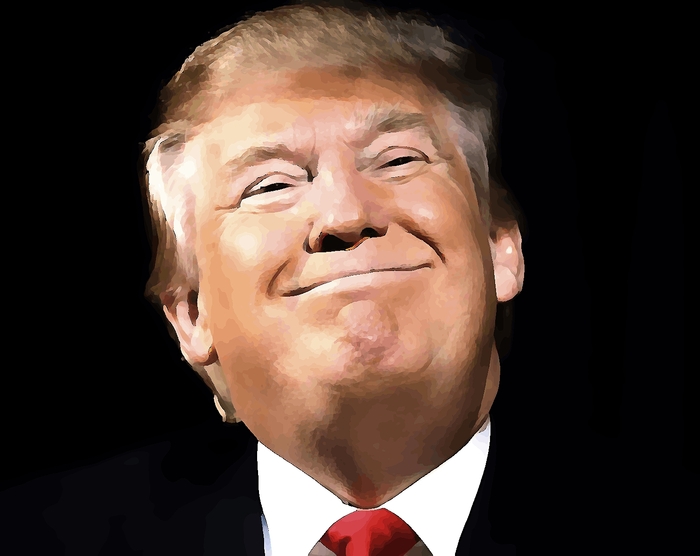
This year is full of all that, and more.
The advent of a president who revels in controversy and roiling established methods and media adds spice. And now comes a series of opinion polls that are counterintuitive to widespread expectations about this midterm's results. It doesn't get much better for storytelling than a real-life reality show with no script and unexpected endings.
According to historical patterns for first midterm elections, the president's party should be mired in deep trouble and on track to lose on average 30 House seats. Possibly more because Donald Trump's job approval remains below 50 percent.
That would put Nancy Pelosi's Democrats in charge there, setting up legislative gridlock and a subpoena surplus for the last half of Trump's first term. Impeachment efforts likely would follow.
But wait. There's more.
Instead of passively sticking to campaign fundraising, as many presidents do in such times when their name is on no ballot, Trump has gone all in to preserve even a slim GOP hold on both houses of Congress. His unannounced travel schedule for the final days reveals laser focus on motivating the GOP base in key Senate contests.
This sets the now familiar Trumpian stage for a high-stakes big win or big loss. Which makes you want to stay tuned, right? After these important messages.
Originally, this president scheduled 40 days of campaigning, which is a lot. Now, he's added nearly a dozen more stops before Nov. 6. Conventional wisdom holds that this could energize Democrats, still psychologically reeling and angry from this crude upstart's stunning upset in 2016.
Of course, the number of presidential campaign days does not guarantee electoral success. In his first midterm election in 2010, Barack Obama made about three dozen campaign forays. His party took a historical shellacking anyway, losing 63 House and six Senate seats. And Obama was more popular at the time than Trump is now.
But Trump appears certain his efforts will energize the smaller Republican base even more. Who's going to tell him he's wrong? And anyway, what else could Trump conceivably do to bait Democrats into a more energized opposition?
Now, add to this toxic political stew an astutely-timed and seemingly inexorable immigrant march of Central Americans on the U.S. border, plus the unusually harsh and overly dramatic Senate confirmation struggle over Brett Kavanaugh's nomination to the Supreme Court.
Both parties think these events will help them in November. What do you think? Intuition based on traditional politics would seem to favor Democrats, who remain motivated by their 2016 defeat and who now want to pass a negative interim judgment on a distasteful president.
Indeed, professionals who study Congress and candidates district by district have been moving more of them toward the D-column the last few weeks.
Polls find more intense interest in voting this fall than in any of the last six midterms. And they've also discovered that about two-thirds of both parties' voters say Trump figures largely in their voting decisions.
Naturally, Trump agrees. "This (election) is a referendum about me," he said at an early October rally in Mississippi. "And the gridlock they'll put this country through."
This is a fascinating twist. Usually when a president is popular, his party nationalizes the election about him. When he's unpopular, the party emphasizes local issues.
This time both sides, including Trump, are making it about Trump.
Many elections, especially for president, are about seeking the middle to gain the widest appeal. Not this one. It's about the two polarized bases corralling the maximum number of loyalists. And don't forget 37 states have early voting, which precludes any change of minds.
This time, the middle independents, who can swing some close battles, are left to themselves.
Though they inevitably complain about Washington gridlock, Americans display a long-term preference for divided government. They've voted for and gotten divided government for 36 of the last 50 years. Democrat Jimmy Carter was the last president whose party held Congress his entire term.
State and internal campaign polls appear to indicate that a combination of the Kavanaugh fight and Trump's voluble, in-state presence have awakened GOP voters and are shifting a number of Senate races into or further into the Republican column.
Polls, of course, are snapshots, not predictions. Ask Hillary Clinton. But they do suggest the GOP could actually grow a Senate majority beyond its current 51 seats, while losing the more volatile House.
Such collective voter wisdom would benefit both parties and arrange a hyper-partisan 24 months leading up to Nov. 3, 2020. But then, you may have become accustomed to that. If not, you better get on it.
(COMMENT, BELOW.)
Andrew Malcolm
McClatchy Washington Bureau
(TNS)
Malcolm is an author and veteran national and foreign correspondent covering politics since the 1960s.


 Contact The Editor
Contact The Editor
 Articles By This Author
Articles By This Author